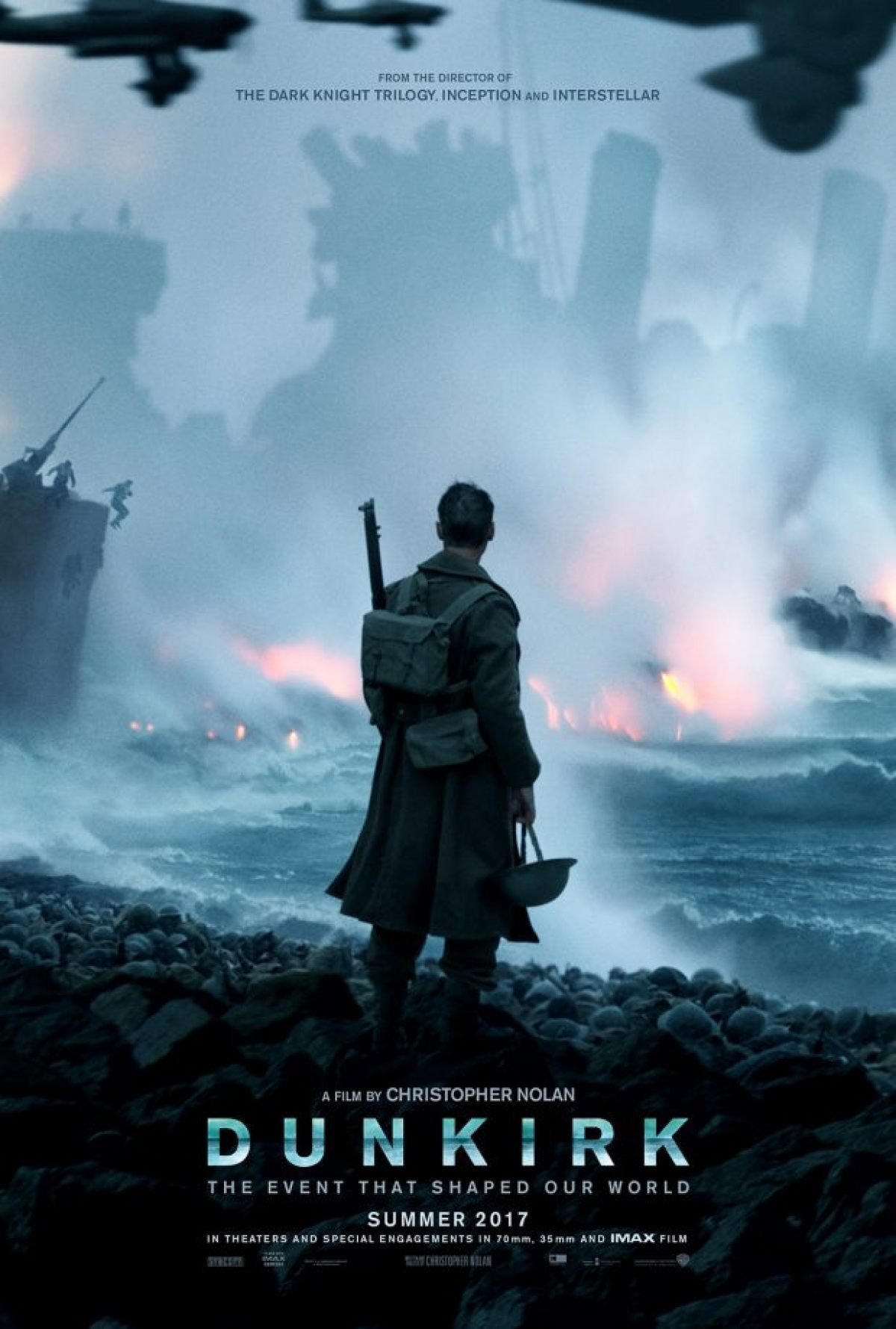
As a Tom Hardy fan, I have eagerly been anticipating the release of his latest film, Dunkirk. In recent weeks, I have been hearing rave reviews about this film. Even Oscar talk. That always worries me. When a film gets too much hype, I am inevitably disappointed. Dunkirk did not disappoint. I started expecting a "Saving Private Ryan" knock off. But Dunkirk is unique while maintaining much of the same battlefield tension that we were exposed to with Private Ryan.
Dunkirk is based on the true story of a World War II battle. In what might be considered some to be a massive defeat, the British managed to evacuate 330,000 troops from a siege situation using private vessels to assist in a mass retreat. But the events were used to rally England. Those 330,000 troops could be redeployed and England had the ability to continue fighting back. The alternative might have been a treaty. Or worse. It is a riveting tale of common heroism.
Movies are more than just story-telling to me. The story is important. But the perspective of the story telling can be just as important. With Dunkirk, the story is told from three perspectives that mirror the nature of warfare. Air, land and sea. These perspectives are personified by characters who we follow as the narrative arc of the three stories intertwine.
The mole follows a young private as he navigates the pitfalls of land and, eventually, sea. He is joined by another soldier whose quick wits help them navigate some dangerous situations as they attempt to get off the beach. The Sea is told from the perspective of an older man whose boat has been requisitioned by the Navy. He leaves port with his son and a young friend intent on helping aid the evacuation. The Air perspective follows three pilots as they heroically attempt to provide some cover to retreating ships that are getting peppered by German bombers. The three stories, like the war itself, are intertwined into a single narrative.
The movie was a little bit confusing at first. Christopher Nolan opted to use minimal dialogue in order to tease more suspense out of the film visually. It was effective, but the bare bones dialogue was also a bit difficult to understand with the accents at times. Because the film is so heavily visual, I don't feel I lost much with the missing dialogue. In order to weave the story together along a common narrative, Nolan needed to use flashbacks. It was set up initially with a timeline, but I lost the timeline in the action a few times. It all made sense once I caught back up with which storyline I was following. It was an effective way of telling the story using this perspective, but it does require a bit of attention to remember what's going on. Overall, I liked the storytelling and felt the reliance on visual tension was effective. I thought it was much more effective than Silence, although there was a bit more dialogue in this film.
Will this film win an Oscar? Maybe. I can see it winning Best Picture. None of the performances stood out as riveting to me. It was more the sum of its parts. Cinematography might be a win here as well. Maybe sound, too. The audio was almost as important in evoking a response as the visual cues at times. This will certainly get a couple of nominations. This film is running 8.9/10 on IMDB right now. Fair enough. I'm right at 9/10 myself. Worth seeing at the theater. It won't be nearly as effective on the small screen. The visual storytelling lends itself to the theater format.
Trailer and poster courtesy of Syncopy.

